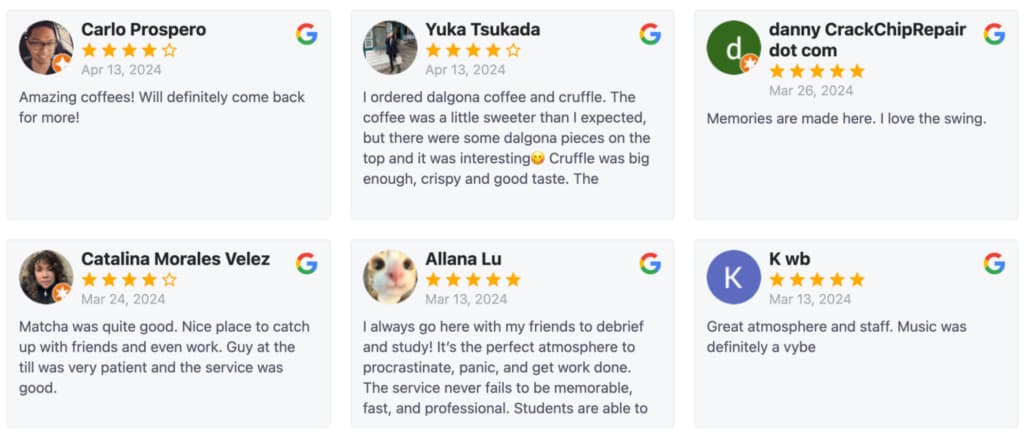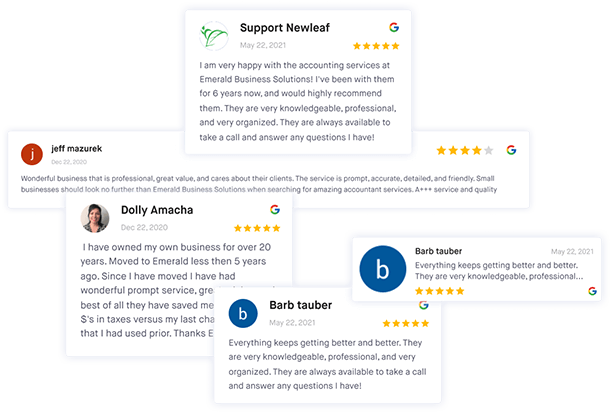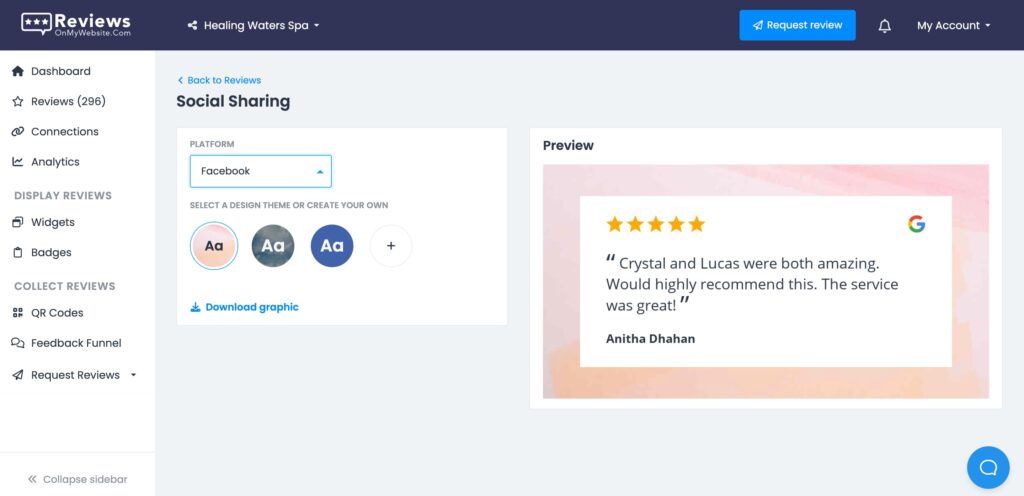Dental marketing isn’t about flashy ads or guessing what might work online. It’s about helping real people find, trust, and choose your clinic.
Every touchpoint—from your website and Google Business Profile to reviews and patient calls—should make booking easy and confidence automatic.
This guide breaks that down into simple, repeatable actions any practice can follow, whether you’re a solo dentist or managing multiple locations.
1. Nail the Basics: Define Your Ideal Patient and High-Value Procedures
Most dental practices try to appeal to everyone and end up sounding like everyone.
Start by deciding who you want to attract and which treatments actually move the needle.
That clarity shapes your message, photos, and offers. Here’s how to get started:
- Pick your priority procedures: Choose three that are profitable and underbooked—like implants, clear aligners, or whitening. Write down the price range, top concerns (cost, pain, time), and ideal patient profile for each.
- Craft a one-line promise: Something like “Gentle family dentistry in Denver with same-day emergency care.” Use it on your homepage, Google Business Profile, and ads.
- Address objections upfront: If people hesitate over cost, mention financing options. If fear is the issue, highlight comfort technology or sedation.
A clear focus makes everything else—SEO, copy, ad targeting—ten times easier. In other words, your dental marketing plan begins with knowing exactly who you’re talking to.
2. Build a Trust-First Website That Works on Mobile
Your website is your online front desk. It’s where potential patients decide whether to trust you enough to book—or click “back” and look elsewhere. If it feels slow, cluttered, or confusing, you’ve already lost them.
A great dental website should feel calm, professional, and effortless to use—especially on smartphones, where most patients start their search.
Showcase Social Proof Near Booking Buttons
Place real patient quotes and star ratings right beside your “Book Now” or “Call” buttons.
This builds instant confidence at the exact decision moment.
Keep each quote short (one or two sentences) and highlight different aspects of the experience—like friendliness, pain-free treatment, or same-day care.
Pro tip: You can embed fresh customer reviews automatically using our review widget.

Make Calling or Booking Effortless
Every extra step means lost appointments. Add a tap-to-call button that’s always visible on mobile and test that it works across iOS and Android.
Keep your contact form simple: name, phone, email, and reason for visit are plenty.
Use a clear confirmation message so patients know their request went through, and add a link to directions or your “What to Expect” page.
Prioritize Speed and Simplicity
Patients won’t wait for a slow-loading site.
Compress large photos and use lightweight image formats (like WebP). Stick to clean, readable fonts, and plenty of white space.
Make sure text is large enough for mobile screens and buttons are easy to tap.
For accessibility, include alt text on images and descriptive labels for forms.
Explain Expertise in Everyday Language
Dentistry terms can intimidate patients. Replace jargon like “periodontal maintenance” with “gum care” or “deep cleaning.”
Write as if you’re explaining procedures to a friend—clear, reassuring, and free of technical fluff.
Add short bios with credentials and experience so visitors immediately know who’s treating them.
3. Set Up Your Google Business Profile the Right Way
If your website is your digital front desk, your Google Business Profile (GBP) is the sign outside.
It’s often the first thing people see when searching for a dentist near them. Yet most practices never fill it out completely.
Add these details:
- Pick exact categories: Use “Dentist” or “Cosmetic Dentist” as primary, then add supporting ones like “Emergency Dental Service” or “Pediatric Dentist.”
- List services and appointment links: Add detailed service descriptions and include an “Appointment” URL with tracking (called UTM parameters) so you can see which visits came from Google.
- Post regularly: Share updates, seasonal promos, or community events weekly.
- Keep photos fresh: Upload new team and office photos monthly.

Improve your dental practice's online reputation
Use ReviewsOnMyWebsite to manage and improve your dental practice's online reputation.
4. Strengthen Credibility With Medical E-E-A-T
Google holds health-related websites to a higher standard because wrong or misleading information could harm people. These are called “Your Money or Your Life” (YMYL) topics—subjects that affect someone’s health, safety, or finances.
Dentistry falls squarely into that group, which means Google expects your content to demonstrate Expertise, Experience, Authoritativeness, and Trustworthiness, known collectively as E-E-A-T.
In simple terms, Google—and your patients—want proof that your advice comes from real dental professionals and that it’s accurate, transparent, and easy to verify. Here’s how to make that happen:
Highlight Real Credentials
Every page that discusses treatments or medical decisions should make it clear who’s providing the information.
Add each dentist’s name, degree, and professional memberships like the ADA or local dental associations. On educational pages, include a line such as “Clinically reviewed by Dr. [Name], DDS” to show expert oversight.
Add Human Faces and Stories
Patients connect faster when they see who you are. Include friendly staff photos, short bios, and even a few sentences about your experience or philosophy of care.
Authenticity builds comfort—and Google values that transparency too.
Keep Practice Details Visible
List your business’s Name, Address, and Phone number (NAP) consistently in your footer and contact pages. Add operating hours, email, and a Google map embed.
These trust cues signal that you’re a real, verifiable business.
Use Structured Data for Clarity
Behind the scenes, you can add small bits of code (called schema markup) that label important details—like your business type, reviews, or FAQs.
This helps search engines understand your content and display it correctly in results.
Avoid Over-Promising or Vague Language
Don’t claim guaranteed results or “pain-free” procedures if that’s not universally true. Stick to clear, realistic descriptions. Patients and search engines both reward honesty.
E-E-A-T isn’t just about pleasing Google. It’s about building visible trust.
When visitors see qualified experts, clear information, and consistent details across your site, they feel confident choosing your practice for their care.
5. Build Local Pages That Actually Help People
Many dental websites have “location” or “service area” pages that sound copied and pasted—just a city name swapped out.
Google and patients can spot that instantly. To stand out, treat each local page like you’re giving clear directions and reassurance to a first-time visitor who just found you online.
Start With Directions and Accessibility
Begin by helping people find your office without friction. Mention well-known landmarks (“two blocks from Central Park” or “next to Walgreens”), available parking, and nearby bus or train stops.
Add details that ease anxiety—like wheelchair accessibility, elevator access, or where to check in once they arrive. The more practical the page feels, the more it serves both users and search engines.
Reference Nearby Neighborhoods and Places
Google uses surrounding landmarks and community signals to confirm your relevance to local searches. Work those in naturally: “We regularly see patients from Elmwood, Midtown, and Riverside,” or “Conveniently located near Oakwood High School and City Fitness Gym.”
These mentions help your page rank for “dentist near [neighborhood]” queries and show locals that you’re part of their daily geography.
Add Unique Local Touches
Show you’re invested in your community. Include a sentence or two about sponsoring a local event, supporting a school team, or hosting an oral health workshop.
It adds human warmth and differentiates you from chain clinics with generic content.
Make Booking Effortless
End every local page with a clear action step. Add a visible “Book an Appointment” button or tap-to-call link.
Embed a small Google Map with a “Get Directions” option so mobile users can navigate in one click.
Pair that with one or two short patient quotes relevant to that area—something like, “Dr. Chen’s office in Midtown made scheduling so easy.”
When each page feels genuinely helpful, Google rewards it and locals trust it. This is one of the simplest dental marketing ideas you can execute consistently—and it compounds over time as your neighborhood footprint grows online.
6. Write Treatment Pages That Educate, Not Intimidate
When people think about finding a new dentist, they rarely start with your name—they start with a question. They search for things like “How long do dental implants last?” or “Is Invisalign painful?”
That’s why treatment pages are your most powerful patient acquisition tool. They capture people before they’re ready to book and gently lead them toward your chair.
Meet Patients at the Research Stage
Patients often spend weeks researching treatments before reaching out. By creating clear, patient-friendly guides for each procedure you offer, your practice shows up when they’re still deciding whom to trust.
Even if they’re not ready to call today, they’ll remember your name when they are—because you were the one who explained things clearly.
Build Confidence Through Clarity
Dental anxiety is often rooted in the unknown. When your website explains procedures step-by-step—what happens during the visit, how long recovery takes, and how discomfort is managed—you take away fear.
A patient who feels informed is far more likely to book than one who still has unanswered questions.
Turn Curiosity Into Appointments
Every well-written treatment page acts like a digital consultation. By addressing real concerns (“Will it hurt?”, “Can I afford it?”, “Am I a candidate?”), you nurture hesitant visitors until they’re ready to commit.
Add a short, inviting call to action like “Schedule a consultation to find out if implants are right for you.” It feels personal, not pushy.
Create an Experience That Converts
Use real photos, clear pricing ranges, and approachable language. People want to know they’re dealing with humans, not marketing jargon. When visitors see helpful content, genuine tone, and easy next steps, they stop comparing and start booking.
In short, treatment pages don’t just boost your rankings—they pre-sell your care. They move potential patients from researching symptoms to trusting your expertise to booking an appointment.
Done right, they work around the clock as digital versions of your best treatment coordinator.
7. Build a Review and Reputation System That Runs Itself
Patients check reviews before they choose a clinic, and they notice how you respond.
According to our research, 86.2% of consumers use Google to look up reviews of businesses, and 78.3% say a thoughtful reply to a negative review increases trust.
Here’s how to keep reviews flowing—and working for you—without adding chaos to your day.
Generate New Reviews Consistently
A steady flow of new reviews signals that your practice is active, trusted, and relevant—both to Google and to prospective patients.
Fresh feedback boosts local visibility, improves click-through rates, and gives people recent proof that your quality of care hasn’t slipped.
The key is to make review generation part of your normal patient flow, not an occasional campaign.
Try mixing several of these approaches:
- Ask at the right moment: The best time to request a review is when patients express satisfaction—right after a painless procedure or a smooth visit. Train your team to recognize those moments and say something simple like, “We’d really appreciate it if you shared your experience on Google.”
- Make it effortless: Keep QR cards or a small sign at the front desk that links directly to your Google review page. Patients can scan it while checking out or waiting for paperwork.
- Send a polite follow-up message: Within a day of the visit, email or text a short note thanking the patient and including your review link. Keep the tone warm and concise, and avoid referencing treatment details to stay HIPAA compliant.
- Motivate your team: Recognize staff who consistently help generate positive reviews—shoutouts in meetings or small internal rewards keep everyone engaged. Never incentivize patients directly, as that violates review platform rules.
- Normalize feedback throughout the office: Place friendly reminders on mirrors, doors, or treatment room clipboards: “Your feedback helps others find gentle, trusted care.” These subtle cues create a culture where reviews feel natural and expected.
Pro tip: You can use ReviewsOnMyWebsite to set up automated email and SMS review request sequences to generate reviews on autopilot.

Improve your dental practice's online reputation
Use ReviewsOnMyWebsite to manage and improve your dental practice's online reputation.
Reply To Reviews Quickly And Calmly
Aim to respond within one to three days—70% of consumers expect that cadence. For positive reviews, thank the patient by first name (only if public) and mention one non-clinical detail like friendliness or punctuality.
For negative reviews, acknowledge the concern, avoid specifics, and move the conversation offline: “We’re sorry this happened and want to make it right—please call our office so we can help.”
Keep responses brief, professional, and free of medical details.
Showcase Reviews Where Decisions Happen
Put your best quotes where patients make choices—homepage, treatment pages, and near “Book Now” buttons.
Feature short, specific lines that speak to common concerns like comfort, kindness, and clear pricing.
Share standout reviews on social media using our social sharing tool so proof shows up in more places than your listings.

Refresh on-site testimonials monthly and attribute each review to its platform to maintain credibility. When patients see recent praise at the exact moment they’re considering you, hesitation drops and bookings rise.
8. Use Social Media to Stay Top of Mind
Social media isn’t about chasing trends. It’s about showing real people behind the scrubs. Patients love seeing authentic, helpful content.
Try this mix each week:
- Staff stories: Introduce your hygienists or assistants.
- Behind-the-scenes moments: New equipment, sterilization, or training day snapshots.
- Short myth-busting videos: Debunk common fears in under 30 seconds.
- Patient shout-outs: With consent, celebrate smile makeovers or milestone visits.
Keep captions conversational and answer comments within a day.
Over time, your posts become tiny trust signals that lead back to appointments.
9. Reduce No-Shows With Smart Email and SMS
Missed appointments and forgotten checkups quietly cost most practices thousands in lost production each year. The simplest way to prevent this is by using consistent, friendly communication that keeps patients informed and engaged.
Here are four key message flows every practice should have in place:
- Appointment reminders: Send reminders one week, one day, and two hours before each visit. Include the time, location, and any preparation tips, along with a link to confirm or reschedule easily.
- Post-visit care tips: Follow up the same day with aftercare instructions and a short thank-you note. Add a sentence inviting patients to share feedback or leave a review while the visit is still fresh in their mind.
- Reactivation reminders: Reach out when it has been six months since after a patient’s last cleaning or exam. Use a friendly tone that encourages them to book their next appointment and reminds them of the benefits of preventive care.
- Treatment follow-ups: Contact patients who accepted but have not yet scheduled recommended treatment. Explain why finishing the procedure soon is important for their oral health and provide a link to book an appointment right away.
Email is ideal for detailed information, while text works best for short, time-sensitive messages. Used together, they help patients stay consistent with care and keep your schedule full throughout the year.
10. Use Paid Search Wisely
Pay-per-click (PPC) advertising can put your practice in front of people who are actively searching for a dentist right now.
It’s especially effective for high-value treatments like dental implants, Invisalign, and veneers because you reach patients who are already comparing providers and ready to schedule.
To make PPC worth the investment, focus on precision rather than volume. Target specific, high-intent searches such as “emergency dentist near me,” “teeth whitening cost,” or “same-day crowns.”
These keywords signal that the person has a problem they want solved immediately, not just casual curiosity.
Write Honest, Straightforward Ad Copy
Avoid gimmicky claims or vague promises. Mention your city, the procedure, and any differentiator that matters to patients, such as “flexible payment plans” or “same-day appointments.”
Simple language like “Gentle dental implants in Austin with free consultations” performs far better than clever slogans because it matches what people are actually searching for.
Make It Easy for Patients to Contact You
Enable call extensions and location extensions in your Google Ads settings. This allows mobile users to tap once to call or get directions, which is often the deciding factor for new patients.
Double-check that your business hours are correct so ads don’t trigger when no one is available to answer.
Track Results That Matter
Clicks do not equal patients. Use tracking numbers for phone calls and hidden fields in website forms to record which ad or keyword generated each lead.
Review these results weekly to see which campaigns lead to accepted treatment, not just inquiries. Redirect your budget to those high-performing keywords instead of running broad, unfocused ads.
When you manage PPC with care, it becomes a predictable source of new patients rather than an expensive guessing game.
The key is targeting intent, writing honest ads, and measuring every outcome so your marketing spend turns into booked appointments.
11. Use AI to Work Smarter
Artificial intelligence (AI) is quickly becoming part of how modern dental practices operate.
When used responsibly, it can handle repetitive marketing and communication tasks, saving your team hours each week.
The key is to treat AI as a helpful assistant, not as a replacement for your professional judgment or your practice’s unique voice.
Simplify Everyday Marketing Tasks
AI can help generate first drafts for marketing materials that would otherwise take hours to write.
You can use it to outline blog posts about preventive care topics, draft social media captions that highlight your team or patient tips, and brainstorm FAQ ideas for your website.
Starting from an AI draft frees your staff to focus on accuracy, tone, and compliance rather than staring at a blank page.
Streamline Internal Operations
Your team spends significant time on documentation and communication. AI tools can summarize long phone calls or patient inquiries so staff can identify common questions or service issues.
Over time, these summaries help refine how you train front-desk staff, manage scheduling, and improve the patient experience.
Follow Clear Safety and Compliance Rules
Never include protected health information (PHI) in any AI prompt or message.
Keep a short internal checklist for human review: Is the response accurate? Is it respectful? Does it comply with HIPAA? Having a second pair of eyes before publishing ensures that automation never compromises professionalism or patient trust.
When used carefully, AI can help your practice stay consistent online, maintain fast communication, and free up time for patient care.
The practices that embrace it safely today will be the ones that appear most responsive, professional, and trustworthy tomorrow.

Improve your dental practice's online reputation
Use ReviewsOnMyWebsite to manage and improve your dental practice's online reputation.
FAQs
What is dental marketing?
It’s everything you do to attract, convert, and retain patients: your website, Google Business Profile, reviews, ads, and even how your team answers the phone. The goal is to build trust and make booking as easy as possible.
How to do marketing for a dental clinic?
Start by defining your ideal patients and priority treatments. Build a mobile-friendly website, claim and optimize your Google Business Profile, and set up automated review requests.
Then, measure what drives booked appointments so you can double down on what works.
How can AI help with dental marketing?
AI can write first drafts of social media captions, summarize recorded phone calls, and suggest responses to online reviews. It’s a powerful time-saver when used correctly, but every output should be reviewed by a human for accuracy, tone, and professionalism before publishing.
Always avoid including private or identifying health details in any AI prompt to protect patient privacy and maintain compliance with HIPAA regulations.
How do dental practices measure marketing ROI?
Track every step: ad click, call, booked exam, accepted treatment, and revenue. Use call tracking and tagged URLs to see which channels bring real patients. Compare cost per accepted treatment—not just leads—to decide where to invest.
Why hire a dental marketing agency?
Agencies with dental experience bring tested playbooks for local SEO, PPC, and conversion optimization. They also handle tracking and dashboards so you see results tied to revenue. For busy owners, that expertise can save months of trial and error.
How much do dental marketing agencies charge?
Most charge a few thousand dollars a month for local SEO and content, with separate fees for ad management and spend. Ask for a 90-day plan and clear deliverables—pages, reviews, call coaching—so you know what you’re paying for and what success looks like.
Keep Your Schedule Full, Not Just Your Pipeline
Marketing is not about vanity metrics. It is about booked appointments and accepted treatment.
Start small by updating your Google Business Profile, publishing one treatment guide, and launching a simple review workflow this month.
Then build from there. When every part of your patient journey, from search and reviews to calls and care, works together, your schedule stays full all year long.




